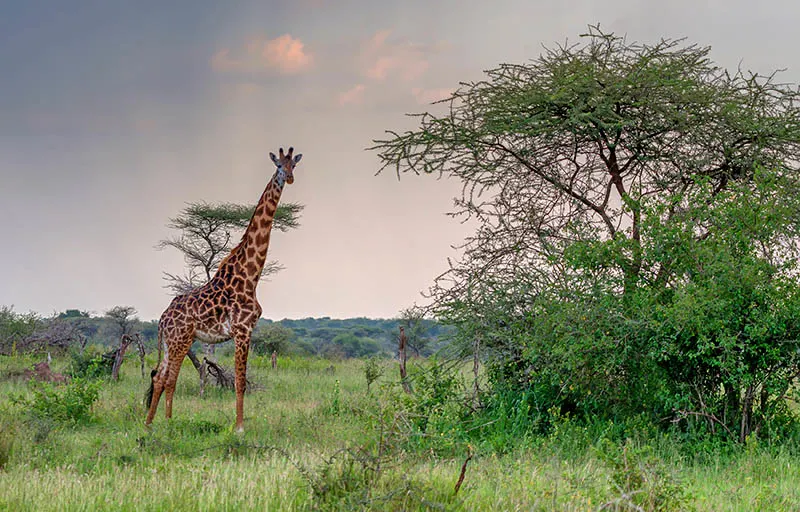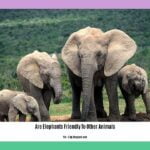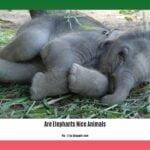Imagine stepping into a world where vast grasslands stretch out before you, teeming with life. The savanna, a breathtaking wilderness, invites you on a journey to unveil its secrets. From towering elephants to tiny creatures that thrive in this unforgiving environment, the savanna is a captivating mosaic of nature’s wonders. Dive in and let the marvels of this wild wonderland unfold before your eyes.
Fun Facts About the Savanna
Picture this: endless grasslands stretching as far as the eye can see, bathed in the warm glow of the sun. This is the savanna, a place teeming with life and full of surprises. Ready to explore some fascinating facts about this amazing ecosystem? Let’s dive in!
Talking Trees? It’s Not Magic, It’s Science!
You won’t hear whispers in the wind, but acacia trees, those iconic symbols of the savanna, have their own way of communicating. When hungry animals start munching on their leaves, these clever trees release a special chemical signal through their roots. This signal acts like a warning system, telling nearby acacias to pump up their defenses and make their leaves less tasty. Talk about teamwork!
The Grass That Stands Strong Against Fire
Savannas are no stranger to wildfires, but the grasses here have a superpower: they’re practically fireproof! Even after a blaze sweeps through, these tough plants bounce back quickly, their roots still healthy underground. This cycle of fire and regrowth creates a patchwork of different-aged grasslands, providing a variety of habitats for all sorts of amazing creatures.
Elephants: The Landscape Architects You Didn’t Know About
We all know elephants are big, but did you know they’re also natural landscapers? These gentle giants often push over trees to get to the tasty leaves, creating open spaces in the process. This might seem destructive, but it actually helps the savanna thrive. These clearings attract other plant-eaters and create a more diverse ecosystem. Way to go, elephants!
The Great Migration: A Symphony of Hooves
Imagine a scene straight out of a nature documentary: millions of wildebeest, zebras, and gazelles moving in unison across the savanna. This breathtaking spectacle, known as the Great Migration, happens every year, driven by the search for greener pastures and water. It’s a powerful reminder of the incredible interconnectedness of life on the savanna.
Hyenas: More Than Just a Laugh
Often portrayed as villains, spotted hyenas are much more complex than their “laughing” call might suggest. In fact, they have a whole vocabulary of sounds they use to communicate with each other. These social creatures use their calls to coordinate hunts, defend their territory, and strengthen their social bonds. Don’t underestimate the intelligence of a hyena!
Termite Mounds: Small Builders, Big Impact
Termites may be tiny, but they’re incredible architects! These little insects work together to build towering mounds that can reach heights taller than a grown-up human. These structures are more than just homes for termites; they act as natural air conditioners, regulating temperature and humidity. Plus, they create important microhabitats for other plants and animals. It’s amazing what teamwork can accomplish!
The Secret World Beneath Our Feet
While we’re busy marveling at the savanna’s surface, a whole other world bustles beneath our feet. Aardvarks, pangolins, and many other creatures make their homes underground, digging elaborate burrows to escape the heat and predators. This underground network plays a crucial role in soil aeration and nutrient cycling, keeping the savanna healthy and vibrant.
Baobab Trees: Ancient Giants with a Secret Weapon
With their massive, bottle-shaped trunks, baobab trees are true icons of the savanna. These ancient giants can live for thousands of years, silently witnessing the changing seasons and the circle of life. But their most amazing feature? Their trunks are like giant water tanks, capable of storing huge amounts of water to survive long droughts. This makes them a lifeline for animals during the dry season.
Lightning Storms: Nature’s Light Show and Fertilizer
Savannas are no stranger to dramatic weather, especially during the rainy season. When lightning storms crackle across the sky, they put on an incredible light show, illuminating the grasslands with an otherworldly glow. But lightning does more than just dazzle; it plays a vital role in converting nitrogen into a form that plants can use, acting as a natural fertilizer for the savanna.
The Big Five: Iconic Animals of the Savanna
No trip to the savanna would be complete without encountering the “Big Five”: lions, elephants, buffalo, rhinos, and leopards. These magnificent creatures are not just awe-inspiring to watch but also play crucial roles in maintaining the delicate balance of the savanna ecosystem. From the apex predators keeping herbivore populations in check to the elephants shaping the landscape, every creature has its part to play.
The savanna, with its wide-open spaces and incredible biodiversity, is full of wonder and surprises. Every plant and animal has a story to tell, revealing the intricate web of life that connects this unique ecosystem.
What Makes the Savanna’s Wildlife So Unique?
We’ve already touched upon the amazing diversity of the savanna, but let’s dive a little deeper into what makes these creatures so special. Picture a land painted with golden grasslands stretching as far as the eye can see, dotted with the occasional acacia tree. This is the savanna, a harsh and unforgiving environment where only the toughest and most adaptable creatures can thrive.
Think about the giraffe, for example. Its long neck isn’t just for show; it’s a perfect adaptation for reaching the tastiest leaves high up in the trees—leaves that other animals can only dream of munching on. Then there’s the aardvark, a nocturnal critter that’s become a pro at digging burrows to escape the scorching daytime heat and lurking predators. Each animal, from the smallest insect to the mighty lion, has developed its own bag of tricks to survive in this challenging environment.
Savannas are teeming with creatures you won’t find anywhere else on Earth. Ever heard of a sable antelope with its majestic curved horns, or an aardwolf, a shy creature that looks like a cross between a fox and a hyena? These are just a couple of examples of the many animals that call the savanna their exclusive home. Sadly, some of these special creatures, like the African wild dog, are facing serious threats and are on the brink of disappearing forever.
But here’s the thing about the savanna – it’s a survivor. Even though droughts come and go, the plants and animals have learned to cope. Think of the tough grasses that can withstand long periods without rain, springing back to life with the first drops of the wet season. And the animals? Well, they’ve become masters of adaptation, migrating long distances in search of water or surviving on very little until the rains return.
The savanna is much more than just a home for wildlife – it plays a crucial role in the bigger picture too. It acts like a giant sponge, soaking up rainwater and slowly releasing it into rivers and streams, ensuring a lifeline for communities and ecosystems far beyond its borders.
And of course, we can’t forget the icons of the African savanna – the “Big Five.” Lions, elephants, buffalos, rhinos, and leopards – these magnificent animals are a testament to the raw power and breathtaking beauty of the natural world.
Our understanding of the savanna and its complex web of life is still evolving. Scientists are constantly making new discoveries, uncovering the secrets of how different species interact, how climate change might impact this delicate balance, and how we can best protect this incredible ecosystem for generations to come.
So, the next time you see a picture of a sunset over the savanna, remember that it’s more than just a pretty landscape. It’s a dynamic stage where the drama of life unfolds every single day, a place of incredible resilience, adaptation, and wonder.
Unveiling the Savanna’s Biodiversity: Who Lives Here?
We’ve talked about what makes a savanna a savanna, but what about who calls this place home? Get ready to explore the amazing variety of creatures that have adapted to thrive in this land of sun, grass, and scattered trees.
The Big and the Bold
Let’s start with the superstars – the animals that probably come to mind when you think “savanna.” Lions, with their powerful roars and group hunting strategies, sit at the top of the food chain. Leopards, masters of stealth, prefer to stalk their prey, often dragging their kills into trees to keep them away from scavengers. And then there are cheetahs, the speedsters of the savanna, built for short, explosive bursts to chase down gazelles and other fast prey.
But it’s not all about the carnivores! Elephants, the gentle giants, shape the very landscape as they graze on trees and dig for water, creating clearings and watering holes that other animals rely on. Zebras and wildebeest, often seen in massive herds thousands strong, are constantly on the move, following the rains in search of fresh grass. This constant migration is a spectacle in itself and crucial for the health of the savanna.
Life Among the Trees and in the Skies
Look up! The savanna’s skies are alive with a kaleidoscope of birds. Soaring high above, vultures with their keen eyesight scan for carrion, playing a vital role in keeping the ecosystem clean. Storks, with their long legs and beaks, wade through shallow waters, hunting for fish and frogs. And then there are the weavers, known for their intricate nests that hang like woven baskets from the branches.
Hidden in the trees, you might catch a glimpse of baboons and monkeys. These clever primates are highly social, living in complex groups with their own hierarchies and communication methods. They’re a constant source of entertainment, known for their playful antics and noisy squabbles.
Don’t Forget the Smaller (and Scalier) Crowd
The savanna’s diversity extends to its smaller inhabitants as well. Snakes, masters of camouflage, lie in wait for unsuspecting prey. Lizards bask in the sun, their scales shimmering with iridescent colors. And in the rivers and watering holes, crocodiles lurk beneath the surface, their presence a reminder of the wildness that defines this ecosystem.
Adapt to Survive
Life on the savanna is a constant dance of survival, and every creature has developed its own unique set of adaptations. Take the zebra, for example. Scientists believe those bold black and white stripes aren’t just for show – they might confuse predators, making it harder to single out an individual when they’re in a large group. Lions, on the other hand, have evolved powerful legs for pouncing and sharp claws for taking down prey much larger than themselves.
A Delicate Balance, Constantly Changing
It’s important to remember that the savanna is not a static environment. Seasonal changes, rainfall patterns, and even human activities all play a role in shaping the lives of the plants and animals that call it home. Ongoing research continues to uncover new insights into the complex web of relationships within this fascinating ecosystem. So, while we’ve covered some of the key players, there’s still much more to discover about the secret lives and remarkable adaptations of the savanna’s inhabitants.
Survival Secrets: How Do Animals Thrive in the Savanna?
We’ve talked about how tough life on the savanna can be, but animals have some clever tricks up their sleeves to not just survive, but thrive in this challenging environment. Let’s dive into some of their amazing adaptations!
Blending In: It’s All About Not Being Seen
Imagine trying to find a single brown needle in a haystack – that’s what predators face every day on the savanna. Animals like zebras, with their bold black and white stripes, might seem easy to spot, but those stripes actually help them blend into the tall grass. The stripes break up their outline, making it harder for predators to single them out. Lions, those majestic hunters, use a different tactic. Their tawny coats blend seamlessly with the golden grasses of the savanna, making them practically invisible to unsuspecting prey.
Weathering the Storm: Riding Out the Dry Season
When the dry season hits, the savanna becomes a much tougher place to live. Water sources dry up, and food becomes scarce. So, what do the animals do? Some, like the wildebeest, become nomadic adventurers. They gather in huge herds and set off on incredible journeys across the savanna, following the rains to find fresh grazing lands. This migration is a true spectacle of nature! But not everyone packs their bags. Some animals, like the crafty crocodile, opt for a more laid-back approach. They burrow into the mud and enter a state of estivation, which is like hibernation, but for hot weather. This allows them to conserve energy and wait out the tough times.
Beating the Heat: Staying Cool Under the Savanna Sun
With temperatures soaring, staying cool becomes a matter of life and death on the savanna. Many animals, from tiny insects to larger creatures like aardvarks, become expert diggers. They create underground burrows that provide a cool and safe haven from the scorching sun. And then there’s the giraffe, a master of adaptation with its long, elegant neck. This incredible feature isn’t just for reaching high leaves; it also helps them regulate their body temperature. The giraffe’s long neck acts like a giant radiator, allowing heat to escape and keeping them cool even under the intense African sun.
Thriving Amidst Competition: Finding Your Niche
Life on the savanna is a constant competition for resources, with limited food and water to go around. Animals have developed fascinating ways to share the wealth and avoid stepping on each other’s toes (or hooves!). Elephants, those gentle giants, are a great example. They live in close-knit family groups, protecting their young and working together to find food and water. This social structure is key to their survival. Then you have the clever antelopes, who’ve become specialized eaters. Some species have developed a taste for acacia leaves, which are plentiful but not very nutritious for other herbivores. By focusing on this readily available food source, they avoid competing with larger grazers like zebras and wildebeest.
It’s important to remember that our understanding of the savanna and its inhabitants is always evolving. Scientists are constantly making new discoveries and refining their theories. So, keep exploring, stay curious, and never stop learning about the amazing world of nature!
Do you have any questions about the amazing flora and fauna of the savannah? Or are you curious about why grasslands never have trees? Here are some important facts about the savanna that will answer your questions.
- China II Review: Delicious Food & Speedy Service - April 17, 2025
- Understand Virginia’s Flag: History & Debate - April 17, 2025
- Explore Long Island’s Map: Unique Regions & Insights - April 17, 2025
















